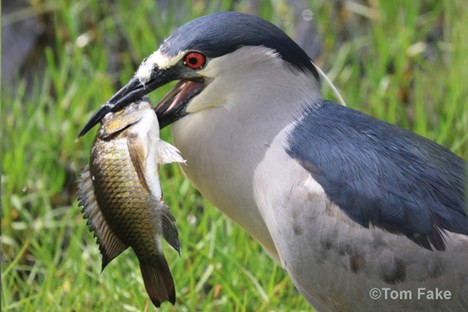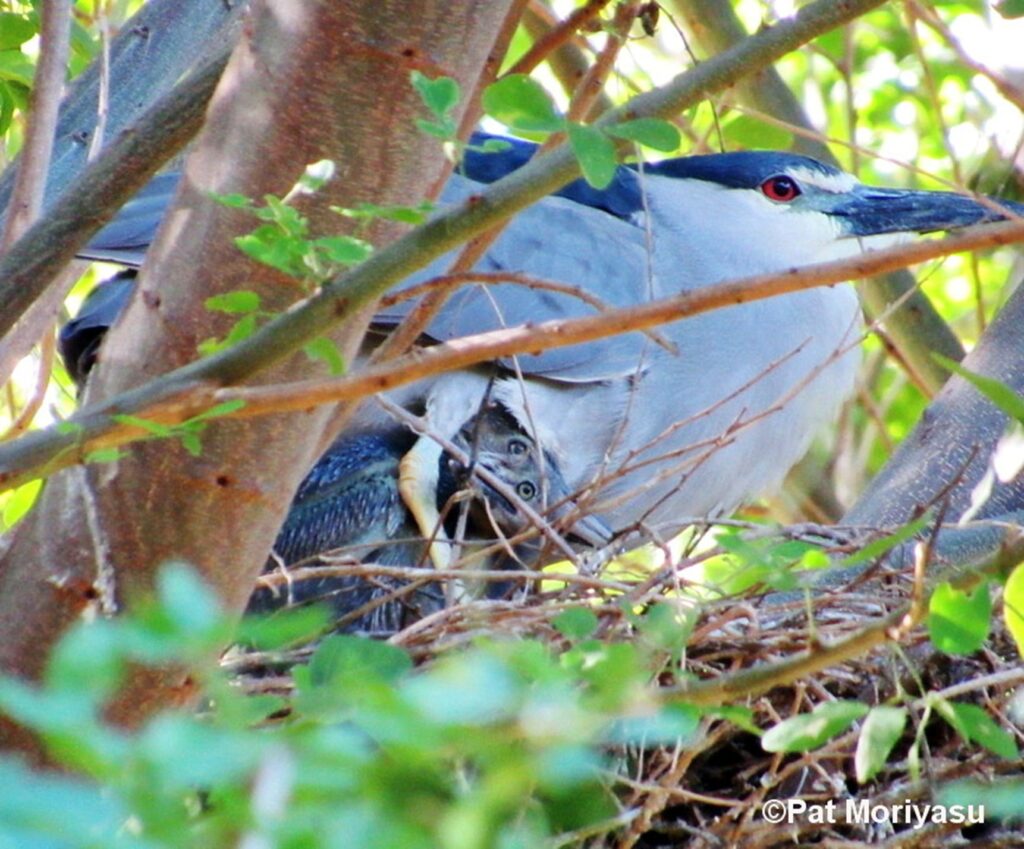
Hooked on ʻAukuʻu, the Black-crowned Night Heron 🌙
/ Bird News, General Updates / By
Susan Scott
Bird Droppings: 10 things we want to share about Hawaiʻi ʻAukuʻu (Black-crowned Night Heron)
- The remarkable Black-crowned Night Heron is the most widespread heron in the world breeding on every continent except Antarctica and Australia.
- This Hawaiʻi native waterbird’s favorite food is fish, especially the introduced tilapia. But ʻaukuʻu are opportunists that eat anything they can catch.
- Some ʻaukuʻu go fishing, tossing breadcrusts, twigs, or leaves into the water, and then snatching fish that come to investigate.
- Although they’re called night herons, ʻaukuʻu also hunt at dawn, dusk, and when raising chicks, in daytime.
- ʻAukuʻu sometimes eat the eggs and chicks of Hawaiʻi’s endangered waterbirds, the aeʻo (stilt), ʻalae kea (coot), and ʻalae ʻula (gallinule). This is hard to watch, but these wetland birds evolved together. Predation among them is normal.
- Protecting Hawaiʻi’s wetlands increases endemic waterbird populations, and in that way, helps balance the predator-prey relationship.
- ʻAukuʻu is also a kind of fishhook with a long slender shaft, perhaps named for its resemblance to the heron’s neck.
- Both male and female ‘aukuʻu look alike. Breeding birds of both sexes have several white feathers streaming from behind the head. These feathers may be absent in nonbreeding birds.
- Immature birds look so different from adults it’s easy to mistake them for another species. Young ʻaukuʻu have brown and white feathers.
- ‘Aukuʻu rest, and nest, in trees. Below, two chicks peek from under a parent in a tree in the Honolulu Zoo’s African Savannah. (Birds are wild, not caged.)

